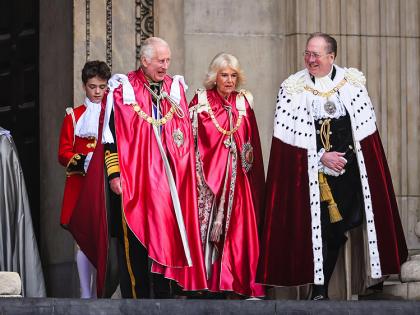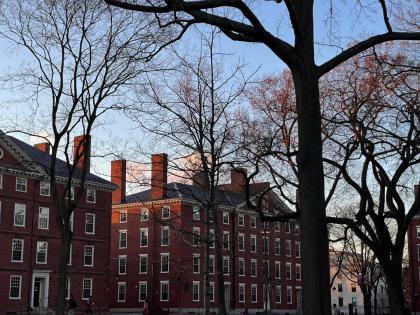Record it for the history books: the last of 646 football games played on natural grass at Harvard Stadium since 1903 is over and gonethe Crimson’s 29-3 rout of Pennsylvania on November 12, 2005. This summer, crews are replacing the grass with a new synthetic surface in a $5-million project that will open up the stadium for night, winter, and off-season use by many Harvard athletes besides football players. The target completion date will allow Harvard to play its 2006 home football games on artificial turf. “We have a great stadium,” says director of athletics Bob Scalise. “Let’s use it more.”
 |
| A representation of how the 55-foot-tall bubble might look inside Harvard Stadium on a winter day. |
| Geller Sport Inc. |
Artificial turf has evolved considerably since the introduction of AstroTurf at the Houston Astrodome in 1967. AstroTurf resembles a half-inch thick indoor/outdoor carpet laid atop pavement; many athletes complain that it produces characteristic injuries, as when a shoe catches on the surface but the foot inside it keeps moving and injures the big toe, producing “turf toe.” In the last few years, turf manufacturers have developed “infill” surfaces laid atop a sand and gravel drainage system. These have two components: strands of green nylon, resembling blades of grass, fixed to a mesh base, and an infill of sand and tiny rubber pellets that keeps the nylon strands standing up. Instead of the special flat-soled shoes that AstroTurf once required, football players can wear regular cleats on the newer synthetic turfs. And statistical studies show injury rates that are comparable to those on natural grass fields. “It looks and plays like grass,” says Scalise.
The refurbishment will also include a single bank of lights installed around the top of the stadium. These will allow a variety of Harvard teams that play on fields, such as soccer and lacrosse, to practice outdoors after dark during fall and spring evenings. Eventually there may be nighttime intercollegiate contests as well.
Even more important is the huge white bubble that will cover most of the stadium’s playing surface from Thanksgiving until mid-March. Artificial turf, which requires neither sun nor water, makes such an enclosure possible. The PVC-coated polyester architectural fabric will be anchored to permanent fittings installed along the inner walls of the stadium; even at 120 yards long, 60 yards wide, and 55 feet high, the structure will not be visible above the outer wall. It will have its own internal heat and lighting, and be inflated with pressurized air, requiring entrance through a sealed revolving door. During the winter months, says Scalise, the bubble will become a venue for practicing “any sport played on a field.”
 |
| The bank of lights along the top edge of the Stadium could illuminate night games, as suggested here. |
| Geller Sport Inc. |
The combination of the outdoor lights and the bubble will enable Harvard to get much more use from the stadium, which recently has seen competitive service only about five days per year, for home football games. It would be possible, for example, to schedule two-hour sessions between 3 p.m. and 11 p.m. in which four different intercollegiate team practices or intramural sports contests could take place.
Most Ivy League colleges will have artificial fields by this fall. Penn and Columbia already have synthetic football fields, and Princeton and Dartmouth are moving toward installing them for the 2006 season. Cornell has a newer version of AstroTurf. Many non-Ivy college venues have synthetic fields, as do most National Football League teams.
Though there will be savings on landscape maintenance, the artificial turf has a life expectancy of about 10 years, so the overall cost savings are not great. But Scalise expects a notable improvement in “the consistency of play.” Fundraising for the project took only two months; beginning last December, about a dozen alumni contributors came forward with the $5 million required. “If this works well in Harvard Stadium,” Scalise says, “we may apply it on other fields as well.”







